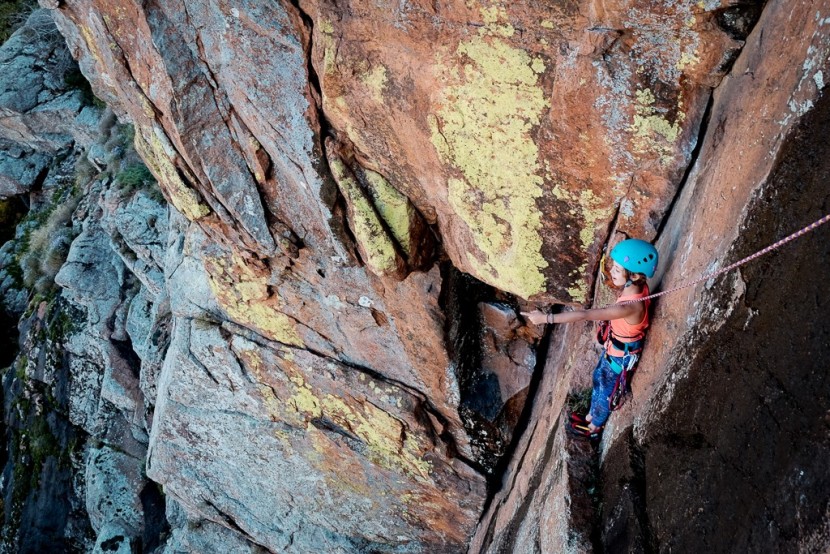We scored each shoe based on five equally weighted metrics: Edging, Cracks, Comfort, pockets, and Sensitivity. While each of our five metrics accounts for 20% of the final scoring, your priorities are likely going to be slightly different. Maybe you are shopping for a kid just getting started at the gym or possibly you are searching out a new pair for your experienced member of the youth circuit, so pay attention to which ratings you find most important.
Edging
Each shoe in our test is compared side by side on outdoor face routes with small edges. Some of the shoes are purposefully built to crush on dime edges while others oozed off almost anything that would be considered an “edge”. It's important to note that beginners and the littlest climbers may not need a shoe that shines on small edges. Instead, comfort may take a much higher priority.
Cracks
If you climb outside enough, eventually, every climber is going to have to wedge their feet into a crack. We compare how well each shoe performs in cracks of all sizes and how well the shoes protect their feet. Many beginner shoes aren't great performers in cracks, but since the youngest climbers tend to stay away from cracks, this isn't likely to be a problem.
Comfort
Comfort is always in our minds as we test. For kids, comfort is king. We considered foot shape, volume, and shoe stiffness or softness. We considered comfort in cracks, on face, and when just standing around. Some kid's shoes were almost absurdly comfortable, but lack performance on small holds. Other shoes that were built for performance were not as comfy, but even the higher-performing kids/youth shoes were more comfortable than similar adult performance-based shoes.
Pockets
Pockets come in all forms. Limestone pockets are the most common, and we did test the shoes in them, but we also found quite a lot of other forms of pockets in basalt, sandstone, and even banded quartzite. Sometimes sticking your toes into a pocket is the only way up, and having a shoe with a tapered toe and relatively stiff midsole will make it that much easier to use those features.
Sensitivity
Sensitivity refers to how well the climber can “sense” the nuance of the rock underfoot. Many footholds have a “sweet-spot,” and a shoe without sensitivity can be difficult to get the foot in that perfect position for optimal sticking power. This becomes noticeably important on slabby (low-angle) climbs where the holds are less “shelf-like”, and some intricate smearing is necessary.

